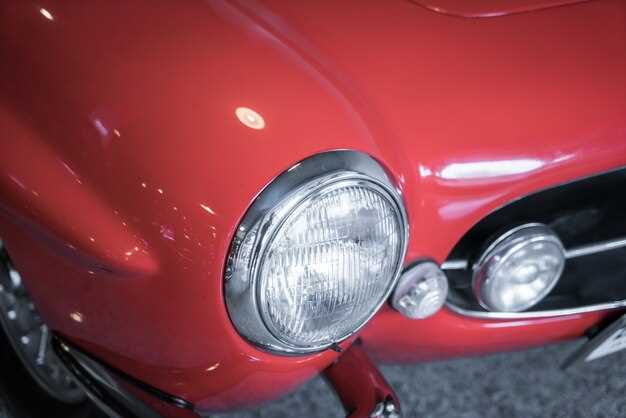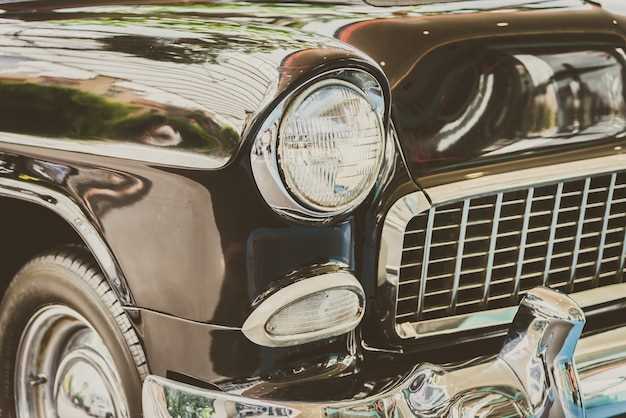
The Porsche 356 stands as an iconic model that laid the groundwork for what would become one of the most revered names in the automotive world. Launched in 1948, the 356 was not just a car; it was a revolution in sports car design, blending performance, style, and engineering excellence. Developed by Ferdinand “Butzi” Porsche, the 356 was the first production vehicle to bear the prestigious Porsche badge, marking the beginning of a remarkable legacy that continues to influence sports car manufacturing today.
With its distinct aesthetics and innovative engineering, the Porsche 356 quickly gained popularity among enthusiasts and racers alike. The model’s lightweight design and rear-engine layout offered an exhilarating driving experience that set it apart from contemporary vehicles. Its racing success further cemented its importance, with numerous triumphs in various competitions, showcasing its capabilities and establishing Porsche as a formidable player in the sports car arena.
The impact of the Porsche 356 extends beyond performance; it has significantly shaped the cultural perception of sports cars throughout the years. By emphasizing the connection between driver and machine, this model helped cultivate a community of passionate fans dedicated to the Porsche brand. Its influence can still be seen in modern Porsche designs, maintaining the spirit of innovation and excellence that the 356 epitomized.
The Classic Porsche 356: A Milestone in Sports Car Evolution

The Porsche 356 holds a prominent place in automotive history as one of the first models produced by the famous German manufacturer. Launched in 1948, the 356 marked a departure from traditional vehicles of its time, establishing a new standard in sports car design and performance.
This iconic model was instrumental in shaping the identity of Porsche and set the foundation for future developments. Key elements that contributed to the significance of the Porsche 356 include:
- Innovative Design: The 356 was designed by Ferdinand “Butzi” Porsche, grandson of the company founder. Its streamlined shape and lightweight construction emphasized both aerodynamics and mobility.
- Performance: Featuring a rear-engine layout and a low center of gravity, the Porsche 356 delivered exceptional handling and agility, appealing to driving enthusiasts seeking a thrilling experience.
- Versatility: The 356 was available in various configurations, including coupe and convertible styles, catering to different tastes and practical needs. This versatility enhanced its popularity among consumers.
- Cultural Impact: The 356 became a symbol of status and performance, transcending mere transportation. Enthusiasts and collectors hail it as a classic, ensuring its legacy continues in automotive culture.
The combination of style, engineering excellence, and driving enjoyment solidified the Porsche 356’s reputation as the benchmark for sports cars. Its success laid the groundwork for future Porsche models, while simultaneously influencing competitors in the sports car market.
In conclusion, the Porsche 356 stands as a testament to innovative engineering and design in the automotive world. Its impact continues to resonate, making it a milestone in the evolution of sports cars and an enduring favorite among collectors and enthusiasts alike.
Key Design Features That Set the Porsche 356 Apart
The Porsche 356, introduced in the early 1940s, is celebrated for several key design features that distinguish it from other sports cars of its era. One of the most notable aspects is its lightweight construction. The use of a steel body developed with a focus on aerodynamics allowed the 356 to achieve impressive performance while maintaining superb handling capabilities.
Another defining characteristic is its streamlined silhouette. The smooth curves of the 356 not only enhance its aesthetic appeal but also contribute to its aerodynamic efficiency. This design philosophy was revolutionary at the time and has influenced countless sports cars since.
The rear-engine layout of the Porsche 356 is a critical element that sets it apart. This configuration offers unique weight distribution, allowing for exceptional traction and stability, especially during cornering. Coupled with a lightweight chassis, this design created a responsive driving experience that was both exhilarating and accessible for enthusiasts.
Furthermore, the integrated bumper design of the Porsche 356, which was seamlessly blended into its body, presented a forward-thinking approach to safety while maintaining an elegant appearance. This attention to detail reflects the overall craftsmanship that Porsche has become synonymous with over the decades.
Lastly, the iconic round headlamps are a signature feature that enhances the 356’s distinctive look. This classic design element not only reinforces its identity but also improves visibility, thereby enhancing safety during night driving.
These design features collectively establish the Porsche 356 as a pioneering model in sports car history, laying the groundwork for future generations of high-performance vehicles and solidifying its legendary status among automotive enthusiasts.
Racing Achievements: How the 356 Shaped Motorsport Culture
The Porsche 356, a vintage gem, played a pivotal role in the development of motorsport culture in the mid-20th century. Its lightweight structure and agile handling made it an ideal candidate for racing competitions, solidifying its status among sports cars. The model’s introduction to the racing scene challenged competitors and set new standards for performance and reliability.
The 356’s success in various racing events, from endurance races to hill climbs, demonstrated the potential of engineering excellence combined with innovative design. Pilots like Hans Hermann and Paul Frère showcased the 356’s capabilities, winning numerous prestigious races. These achievements not only elevated the Porsche brand but also inspired a generation of enthusiasts and future engineers in the automotive industry.
As a result of its racing accolades, the 356 contributed significantly to establishing a vibrant motorsport culture. It fostered a community of passionate fans and drivers who admired the blend of performance and elegance inherent in Porsche vehicles. The presence of the 356 on the racetrack encouraged the development of supporting events, clubs, and a competitive spirit that continues to thrive today.
Through its racing lineage, the Porsche 356 left an indelible mark on the motorsport landscape. It served as a template for future high-performance vehicles and underscored the importance of competition in driving innovation. The legacy of the 356 remains alive, inspiring successive generations to pursue excellence in automotive design and racing.
Collector’s Insights: Evaluating the Vintage Porsche 356 Market

The vintage Porsche 356 market has seen a remarkable resurgence in recent years, attracting collectors and enthusiasts alike. As one of the earliest models produced by Porsche, the 356 holds immense historical significance and charm, making it a coveted asset for many. Evaluating this market involves understanding key factors that influence value, desirability, and overall trends.
Condition and Authenticity: When assessing a vintage Porsche 356, the car’s condition plays a critical role in determining its market value. Originality is highly prized; thus, matching numbers–where the car’s chassis, engine, and transmission numbers align with factory records–is essential. Restorations should be meticulously documented to retain authenticity while enhancing appeal to potential buyers.
Rarity and Special Models: Certain variants of the 356, such as the Speedster and the Carrera, command higher prices due to their limited production numbers and unique features. Collectors often seek these rarer models, which can dramatically influence overall market trends. Understanding the specifics of different models can help buyers make informed investments.
Market Trends: The vintage car market is influenced by broader economic conditions, collector demographics, and auction results. Recent years have demonstrated a growing interest in classic sports cars, with the 356 increasingly recognized as an appreciating asset. Monitoring auction results and sales data can provide insight into pricing trends and buyer behavior.
Community and Events: The Porsche community plays a pivotal role in evaluating the vintage 356 market. Participation in marque-specific events, such as car shows and rallies, fosters a vibrant network of collectors. These gatherings offer opportunities for education, relationship-building, and showcasing vehicles, ultimately impacting market dynamics.
In conclusion, navigating the vintage Porsche 356 market requires a comprehensive understanding of various influencing factors. By focusing on authenticity, rarity, economic conditions, and community engagement, collectors can make informed decisions that enhance their appreciation of this iconic model while also securing valuable investments.
 Skip to content
Skip to content





